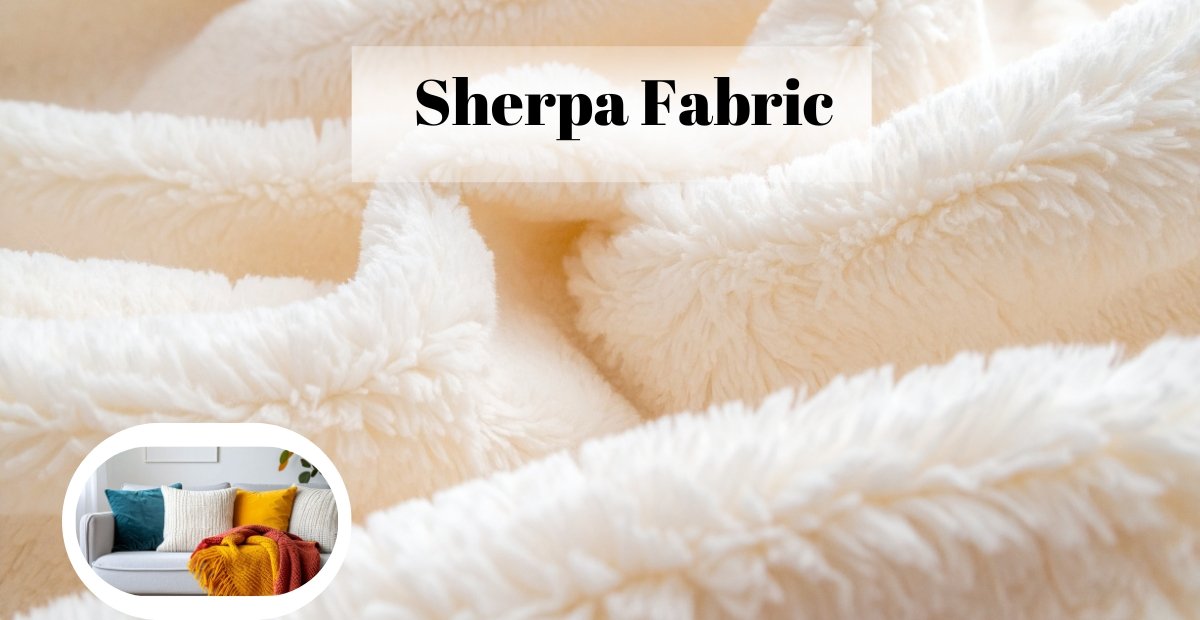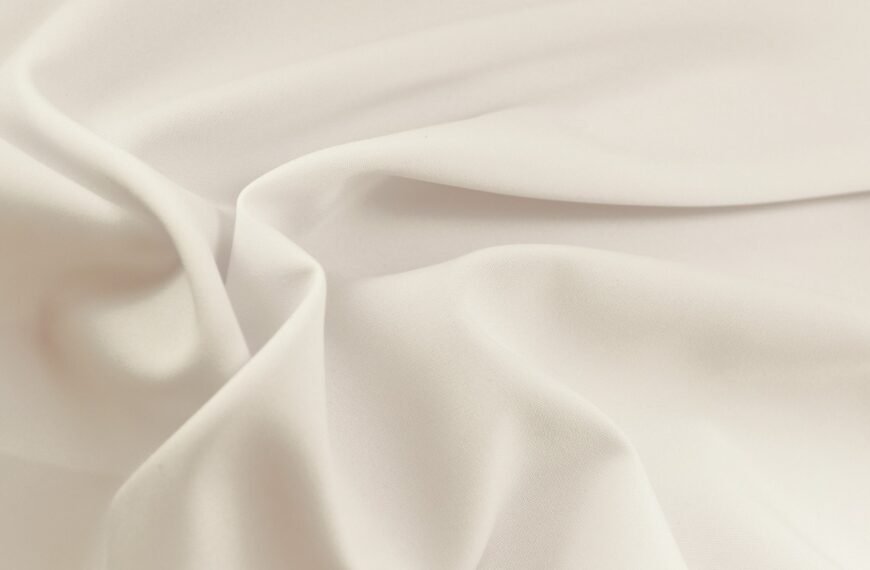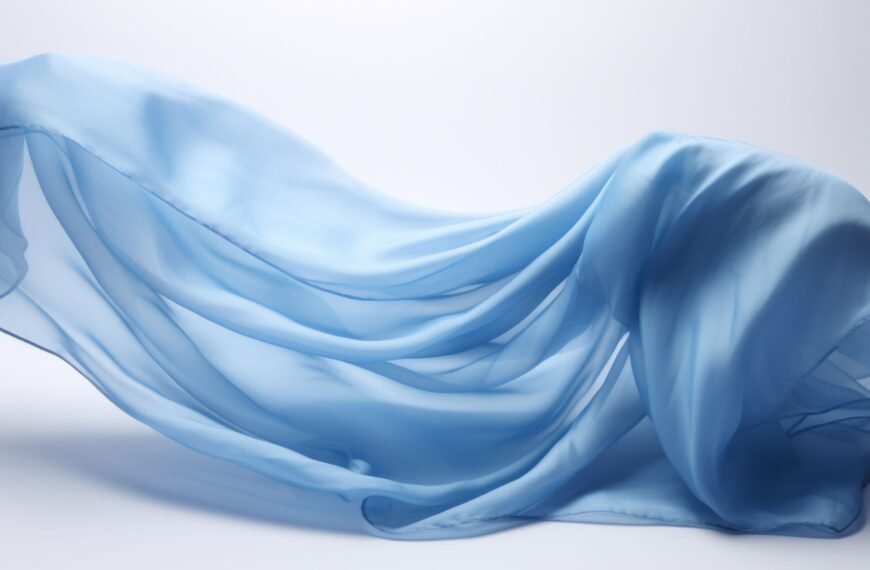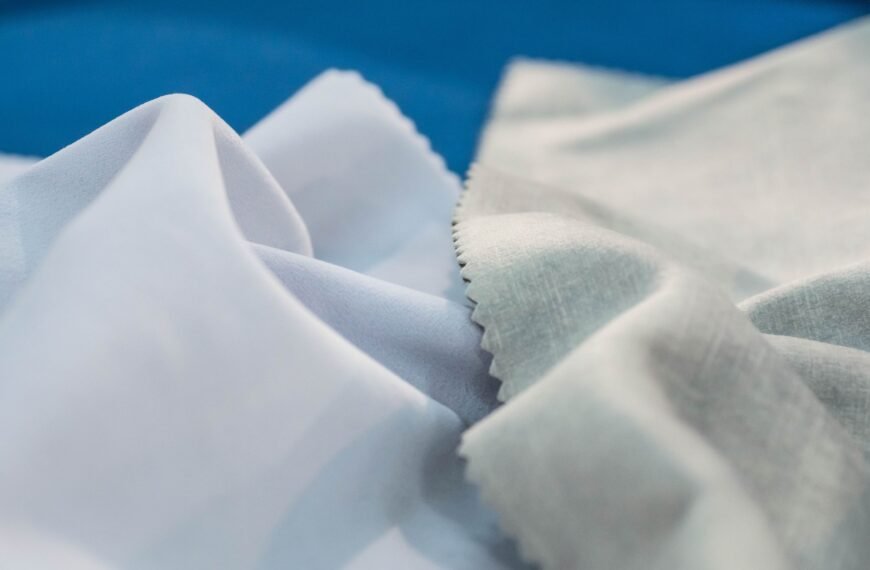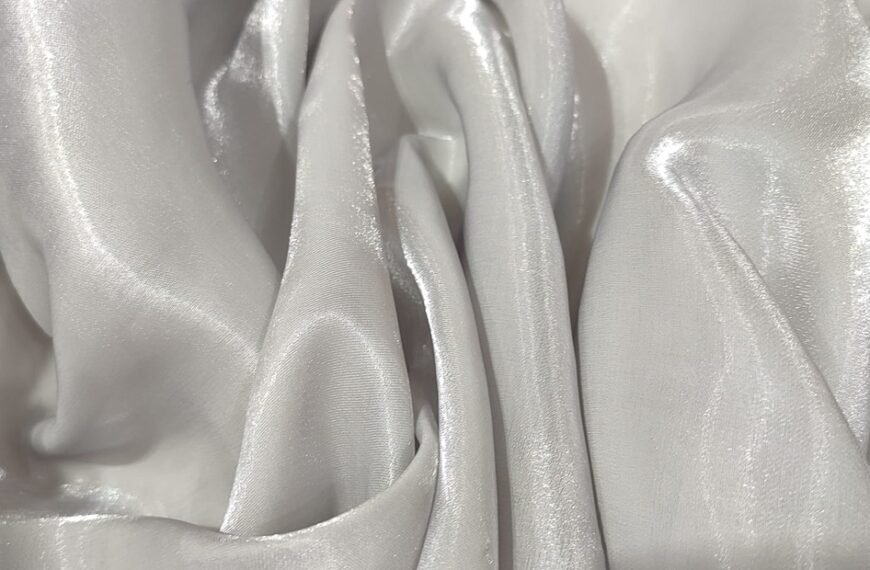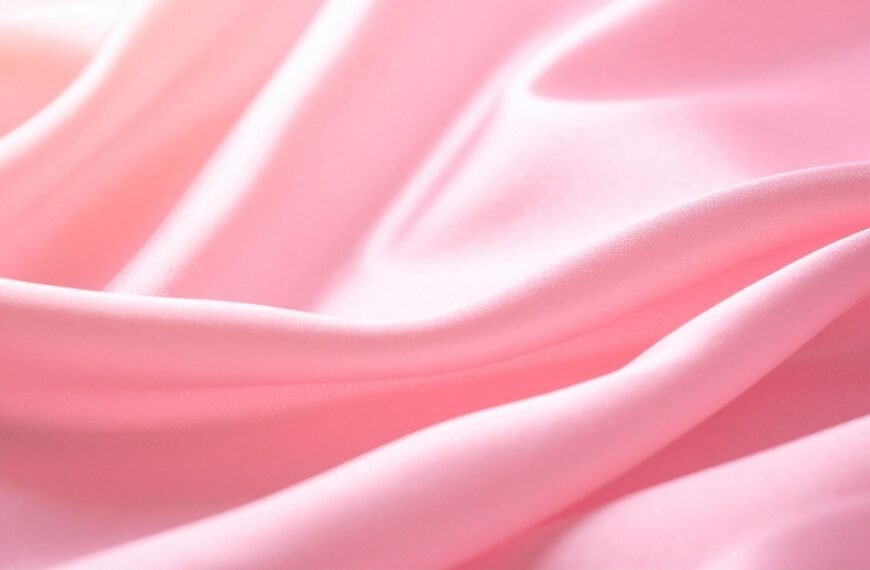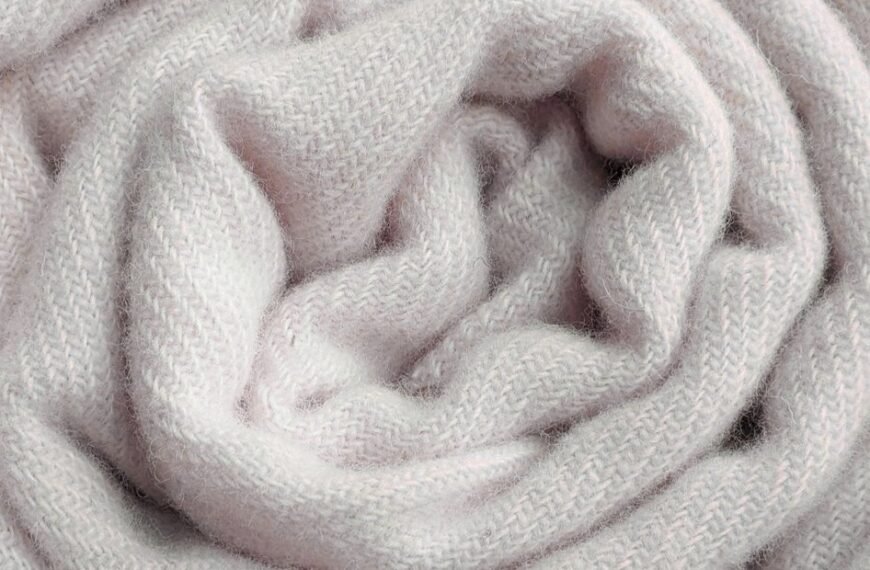Sherpa wool fabric is one of the coziest textiles in contemporary fashion and home aesthetics. The fabric’s fluffy wool is especially lovely for jackets, blankets, and winter additions, owing to its warmth and comforting texture. Though Sherpa wool fabric is reminiscent of natural sheepskin, it is a lot more lightweight, breathable, and low maintenance. In recent times, its soft texture coupled with advantageous characteristics have made it very popular.
This guide attempts to cover the history, properties, benefits, uses, and care tips of Sherpa wool fabric. Being familiar with the extent of its benefits will help in understanding its popularity across fashion and home interiors as a perennial symbol of warmth and comfort.
What is Sherpa Wool Fabric?
Sherpa wool fabric is a plush wool substitute fabric that is designed to feel like sheepskin wool. While it utilizes more wool in its composition in the past, modern shirpa fabric has a substantial percentage of polyester fabric for ease of upkeep and durability.
Sherpa fabric was intended to be lightweight, cheaper, and to mimic the insulative properties of sheepskin wool. The name of the fabric is derived from the Sherpa people of Nepal. The Smooth knit side offers and protection while the wool like pile side offers comfort. dual side offers enhanced comfort.
History of Sherpa Wool Fabric
The original version of Sherpa wool stem from the type of clothing worn by the Sherpa people of the Himalayans. The high elevated region of the world requires special garments that are made of thick wool. Over time, the garments that were made of natural fleece were more lightweight and easier to produce.
Sherpa fabrics started being integrated into outerwear by the mid-20th century, especially in winter overcoats and linings. Nowadays, designers and manufacturers appreciate Sherpa wool for its luxurious and functional attributes.
Properties of Sherpa Wool Fabric
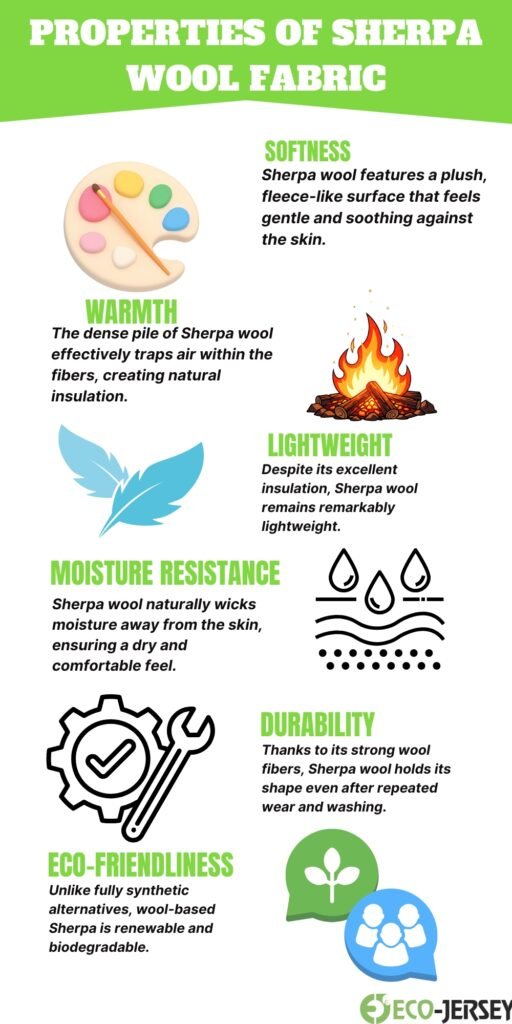
Sherpa wool has appealing and distinct attributes, which is why it is a popular choice for comfort, durability, and style for textiles.
1. Softness – Sherpa wool has a plush surface which is gentle on the skin and offers comfort during colder months.
2. Warmth – Sherpa wool has a dense pile which traps air and provides insulation.
3. Lightweight – Sherpa wool is warm yet lightweight, which is why it is ideal for jackets and ponchos.
4. Moisture Resistance – Sherpa wool dissipates moisture and offers comfort by keeping the body dry.
5. Durability – Sherpa wool is durable and holds its shape despite resistant wear and numerous uses.
6. Eco-Friendliness – Unlike synthetic Sherpa, wool-based Sherpa biodegradable and offers a sustainable alternative.
Sherpa wool is a luxurious yet practical choice for fabrics due to these attributes.
Benefits of Sherpa Wool Fabric
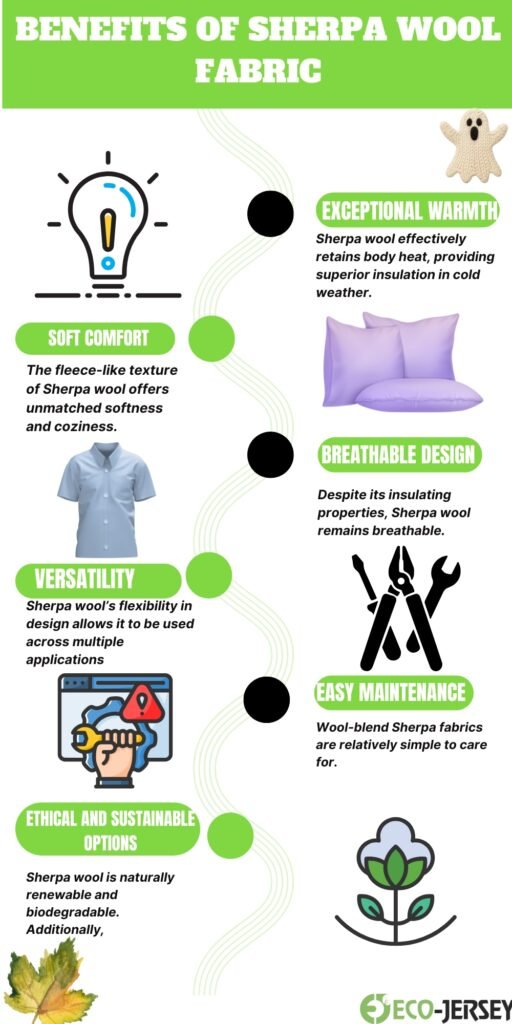
There are many reasons why Sherpa wool fabric stands out in the textiles world.
- Exceptional Warmth: It effectively retains heat making it suitable for cold climates.
- Soft Comfort: The wool fleece offers maximum cosiness and tactile satisfaction and tones down stress.
- Breathable Design: Sherpa wool prevents overheating even during vigorous activities.
- Versatility: Sherpa wool’s multiple design possibilities ranges from clothing to home decor.
- Easy Maintenance: Blended Sherpa fabrics are convenient to care for.
- Ethically Friendly: Faux Sherpa alternatives are warm and soft for persons needing animal hides.
The Sherpa wool fabric’s combination of many positive attributes makes it everlastingly appealing.
Uses of Sherpa Wool Fabric
Because of its warmth and flexibility in use, Sherpa wool fabric finds applications in a number of different areas in the world of fashion, décor, and accessories.
1. Apparel
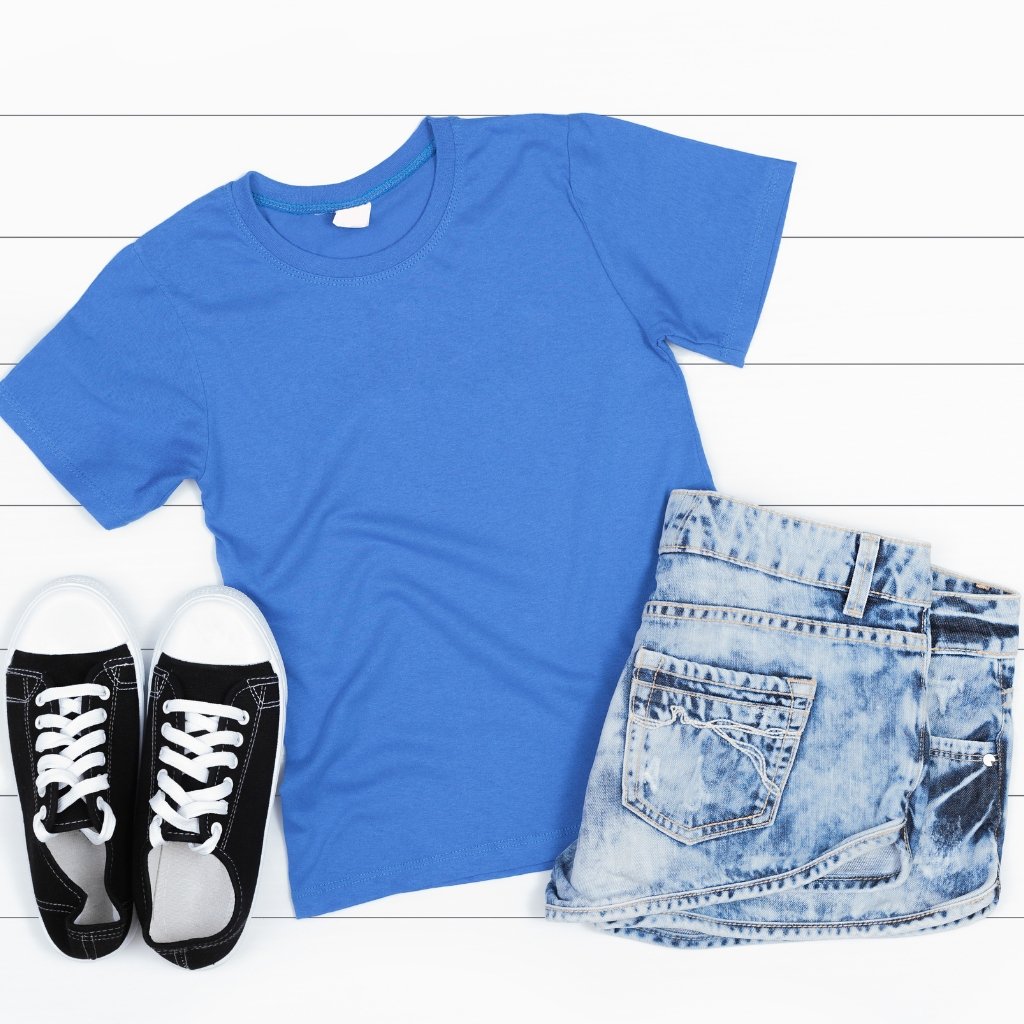
Sherpa wool fleece is a popular choice for linings, and for outer wear like jackets, coats, and hoodies. It is common to find Sherpa wool interiors in winter clothing as the wool fleece softness and warmth is a winning combination for the colder months. The fabric’s fluffy texture also stylishly enhances casual wear.
2. Home Furnishings

Sherpa wool fabric adds comfort and warmth with throws, blankets, and cushion covers, and bedding. It evokes warmth and relaxation, making it ideal for winding down on chilly winter evenings. It succeeds in making rooms with rustic themes cozy and inviting.
3. Accessories

“From sherpa wool fabric to chic accessories: bags, hats, and denim-ready looks.
Sherpa wool provides unparalleled warmth in winter hats, gloves, slippers, and scarves. Its plush, fleecy texture adds a luxurious feel to winter accessories and provides functionality to winter apparel.
4. Footwear and Upholstery

Sherpa wool linings provide boots and upholstery with Sherpa wool upholstery slippers unmatched warmth and snug comfort in the winter.
The fabric’s versatility in both home design and fashion continues to drive innovation.
Difference Between Sherpa Wool and Fleece Fabric
Although Sherpa wool and fleece fabric are similar, there are some important differences. Sherpa is characterized by a heavy fleece wool fabric pile, whereas fleece is smooth and has a synthetic texture. Sherpa offers more insulation, while fleece is lighter and provides more water resistance. These materials are used for similar purposes, but fleece is used more to attain a traditional, cozy, and rustic look.
Care and Maintenance Tips for Sherpa Wool Fabric
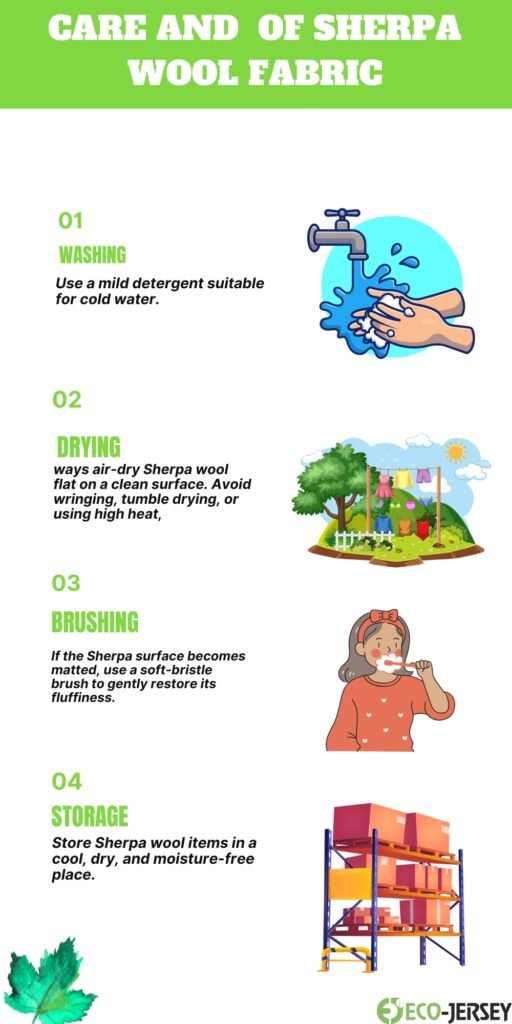
Good care helps to maintain the softness and longevity of Sherpa wool fabric.
- Washing: Use detergent approved for cold water. Hand washing is preferred, but a gentle machine cycle is acceptable.
- Drying: To maintain drying, air dry flat. Do not high heat or tumble dry.
- Brushing: If shears become matted, gently brush the surface the restore its fluff.
- Storage: Keep in a cool, dry, moisture-proof area.
Following these instructions will ensure your what is wool fabric items remain soft, cozy, and wear resistant for years.
Sustainability of Sherpa Wool Fabric
As with all wool products, Sherpa wool fabric has the potential to be environmentally friendly. Wool fibers are renewable and biodegradable. Furthermore, wool fabric durability and long lasting characteristics make it less likely to be replaced frequently. Eco friendly production is also seen in faux Sherpa, as it is made of the recycled fibers that reduce waste and rubber, thereby eliminating animal products.
There will always be a balance of comfort, ethics, and environmental responsibility with wool products in the world of sustainable fashion.
Conclusion
Sherpa wool fabric is the embodiment of luxury, functionality, and comfort all from the same fabric. There is a reason it has become a staple in home décor in addition to clothing apparel. Easy maintenance and eco friendly wool products illustrate the balance of style with sustainability.
FAQs
What is Sherpa wool fabric made of?
Sherpa wool fabric is made of soft and warm natural wool, polyester, or a combination of both.
Is Sherpa wool fabric sustainable?
Yes, natural Sherpa wool is sustainable because it is renewable and biodegradable, and faux Sherpa wool can be recycled.
How should Sherpa wool be washed?
To keep it fluffy and undamaged, wash Sherpa wool with cold water, mild detergent, and allow it to air dry.
